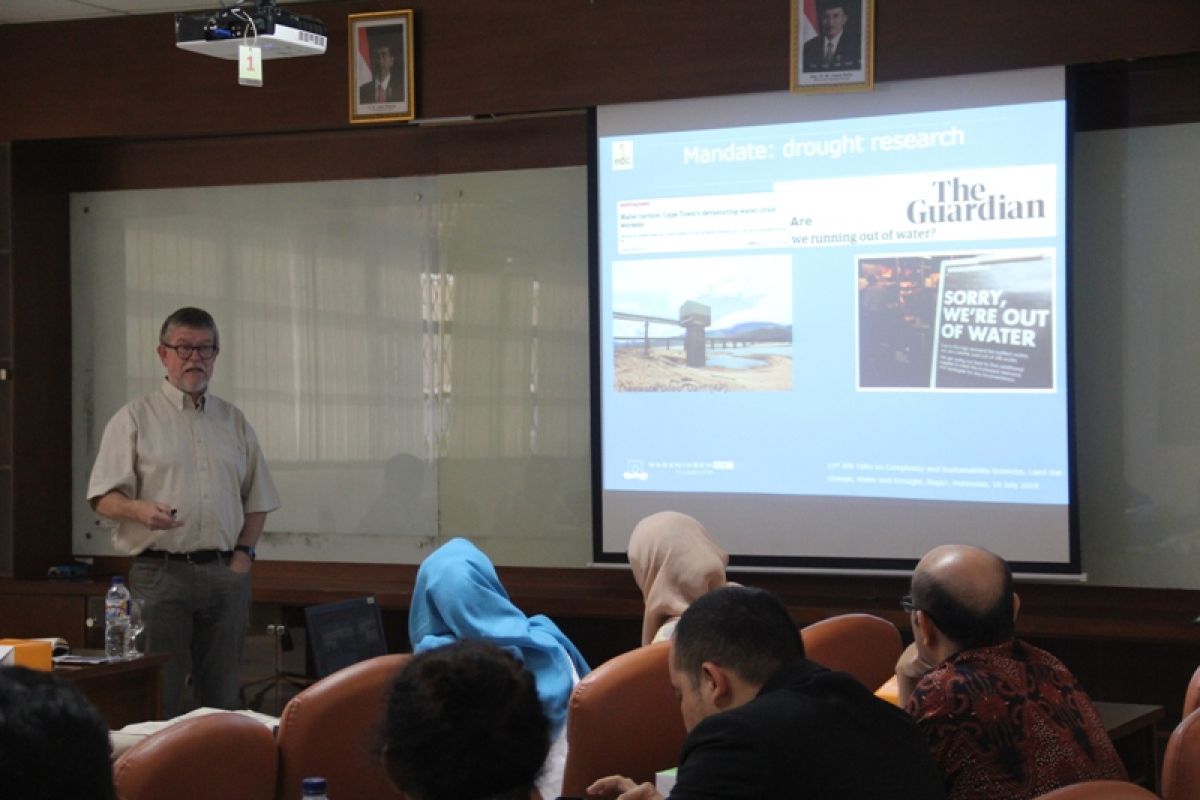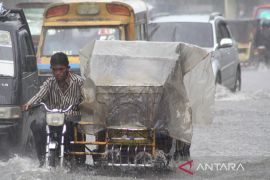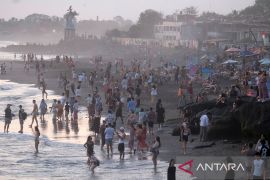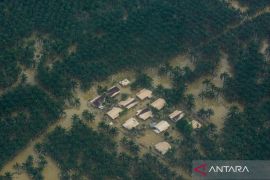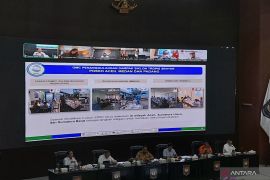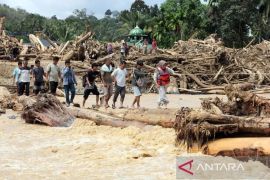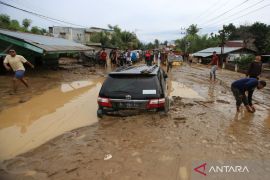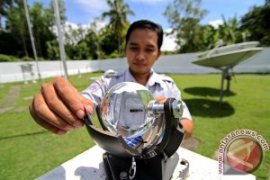These unique weather and climate dynamics can be attributed to Indonesia's territorial location around the equator as well as it being flanked by two oceans (the Pacific Ocean and Indian Ocean) and two big continents (Asia and Australia), Dwikorita Karnawati, head of the Meteorology, Climatology and Geophysics Agency (BMKG) explained recently.
This uniqueness is apparent from the contrasting weather or climatic conditions witnessed in the country. Even as several areas are experiencing drought, others are receiving extreme rains.
While the dry season has set in in most of Indonesia's southern regions, high rainfall is still likely in the equatorial regions, according to the BMKG.
"For instance, during the dry season, almost all parts of southern Indonesia and central parts of Indonesia, stretching from Central Sulwesi, Maluku, to northern Papua, have the potential to receive relatively high rainfall in the next two-20 days," Karnawati informed.
This year, the dry season began in April in parts of the country. On the basis of BMKG's monitoring results, the dry season is projected to continue until October, and peak in August and September. From November to mid-2021, the country is expected to experience the rainy season.
Of the 342 seasonal zones (ZOM) in Indonesia, 64 percent entered the dry season until mid-July, explained Herizal, the deputy-in-charge of climatology at BMKG.
This is in line with the dominance of the Australian monsoon wind circulation that is dry and blows from the east-southeast.
The forecast is based on the prevailing warm sea water surface temperature in the Indonesian waters, which would ensure supply of sufficient water vapor to the atmosphere.
The regions experiencing dry season include East Nusa Tenggara, West Nusa Tenggara, Bali, East Java, most of Central Java and West Java, western and eastern Jakarta, North Coast of Banten, east coast of Jambi, Riau, Aceh, and central, northern and eastern North Sumatra.
The western part of South Kalimantan, eastern part of Central Kalimantan, southern part of West Sulawesi, west coast of South Sulawesi, southern part of Southeast Sulawesi, western Maluku, eastern West Papua, and central, southern and northern Papua are also witnessing the dry season.
About 30 percent of the seasonal zones in regions entering the dry season have experienced arid conditions without any rains for a period of 21 to 30 days, 31 to 60 days, and above 61 days.
"The longest days without rains have been observed in Oepoi, Kupang City, East Nusa Tenggara, for 70 days. Meanwhile, BMKG's forecast for rains for the next nine months indicates that the dry season will generally last until October, 2020," Herizal stated.
For instance, the districts of Bombana, Muna, Central Buton, and South Buton in Southeast Sulawesi province have gone several days without rains, according to a local climatology station.
The four districts experienced days without rain in the medium, long, and very long term categories, said Adlian Afa Annie, a forecaster on duty at the Climatology Station in South Konawe, in a statement here on August 23, 2020.
In addition, several districts in East Java are also experiencing extreme drought after recording no rainfall in more than 60 consecutive days.
Based on the monitoring of the rain post received from the BMKG station in Malang, four districts in the province, namely Bangkalan, Bondowoso, Pamekasan, and Sampang, are experiencing extreme drought, head of the data and information section at the BMKG office at Juanda Airport, Teguh Tri Susanto, said.
Besides, forest fires have also been reported in several provinces of Sumatra.
On August 8, 2020, the Terra and Aqua satellites as well as the NOAA20 satellites detected 23 medium-category hotspots in North Sumatra.
The North Sumatra meteorological, climatology, and geophysics office (BMKG) noted in a statement that of all the detected hotspots indicative of forest fires, one each has been found in Humbang Hasundutan district and North Labuhanbatu, while two have been spotted in Karo.
In South Sumatra, aerial firefighting helicopters have dropped over 4.6 million liters of water to help douse forest and land fires at 51 spots over the past month.
Five helicopters have been deployed to extinguish wildfires since June 25, 2020, when a blaze began ravaging Tanjung Batu village, Ogan Ilir district, Ansori, an official with the Disaster Mitigation Office (BPBD) of South Sumatra, stated in Palembang on Thursday.
In the meantime, regions that are yet to experience a dry season must watch out for rains with likely high to very high precipitation in the next four months.
Aceh, West Sumatra, West Kalimantan, North Kalimantan, Southeast Sulawesi, Central Sulawesi, West Sulawesi, North Maluku, West Papua and parts of Papua are likely to see rainfall in July, 2020; parts of Papua in August; parts of North Sumatra in September; and, Bengkulu in October.
Meanwhile, floods have been reported in several parts of the country and have claimed several lives.
On August 25, 2020, floods submerged hundreds of houses in three villages on Seram Island, Maluku province, resulting in the displacement of hundreds of people.
In Haruru village, 420 people have been displaced by flooding and are currently taking refuge in schools, mosques, and churches.
In Waitetes hamlet, Makariki village, 33 families, comprising 167 individuals, have been displaced by flooding. The local authorities have offered food to them. In Simalou hamlet (Km 9), 20 families comprising 102 individuals have been evacuated to higher ground owing to flooding.In early August, flash floods claimed one life, isolated three sub-districts, and swept away 29 homes in South Bolaang Mongodow district, North Sulawesi province.
The sub-districts isolated by the floods were Helumo, Tomini, and Posigadan, noted Raditya Jati, spokesperson for the National Disaster Mitigation Agency (BNPB).
At least 7,046 families, comprising 22,655 individuals, were affected by flash floods in seven sub-districts of South Bolaang Mongondow. The flooding also caused severe damage to 64 homes, five bridges, and roads.
The most tragic natural disaster occurred in North Luwu district, South Sulawesi, on July 13, 2020, when major flash floods claimed 32 lives and rendered 16 people missing. The flash floods also injured dozens of people and displaced 3,500 families.
The National Disaster Mitigation Agency reported that 3,202 houses, nine schools, and 13 places of worship, including 12 mosques and one church, were affected by the floods. One health facility, a laboratory, one PSC unit, and eight government offices were also affected.
An approximate 12.8 kilometers of access roads and nine bridges, as well as farming areas also sustained damage on account of the floods. (INE)
Related news: East Java districts experience extreme drought
Related news: Indonesia braces for extreme dry season amid COVID-19
EDITED BY INE
Editor: Suharto
Copyright © ANTARA 2020
